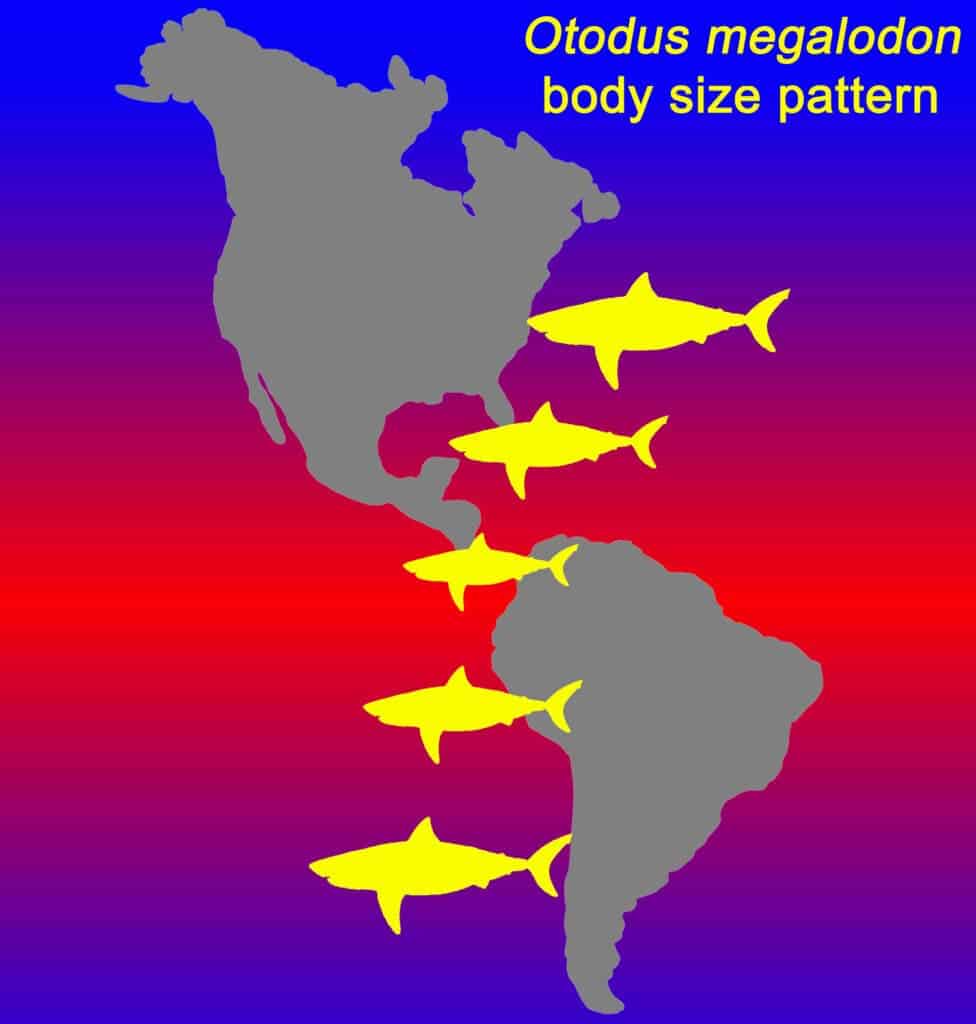Megalodon was the uncontested marine predator of its time. Being about the size of a bus — twice as long as the second-largest shark in history — this fierce sea monster must have been a sight to behold. But according to a new study, the extinct species of shark, which lived from the early Miocene to the end of the Pliocene, from 23 to 2.6 million years ago, these truly huge Megalodons may have only been found in higher latitudes, where the water is much colder. Around the equator, the size of Megalodons was less impressive, though they were still a force to be reckoned with.

Like all sharks, Megalodon’s skeleton was mostly made of cartilage. This means that only its teeth and vertebrae have survived in the fossil record. But this seemingly limited fossil evidence can reveal a wealth of information about the intimate lives of ancient sharks, such as what they ate, how they bred, and much more.
In early 2021, Kenshu Shimada—a professor of paleobiology at DePaul University in Chicago — analyzed growth bands in Megalodon specimens, showing the fierce sharks gave live birth to the largest babies in the shark world, measuring about 2 meters (6.6 feet) in length. This study also estimated that Megalodon had a life expectancy between 88 and 100 years.
In a new study published today in the journal Historical Biology, Professor Shimada took a new look at Megalodon teeth, re-examining their geographical occurrence and corresponding estimated body sizes to see whether water temperature may have had any notable influence on ancient sharks’ development.
The idea for this new study originated while Shimada was out on a family fishing trip to the Florida Keys with Martin Becker, a professor of environmental science at William Paterson University in New Jersey.
“After my daughter’s ‘big catch,’ we started to discuss where large fish live, leading to a conversation about different populations of Megalodon,” Shimada told ZME Science.
The researchers employed previously published data, some of which offered possible Megalodon nursery areas judging from the presence of much smaller teeth relative to other locations. But there is another possible explanation — the new study found that these supposed nursery areas were concentrated close to the equator, and this could have had a major impact on the size of these prehistoric sharks.
The ocean receives most of its heat along the equator, where incoming solar radiation is about double that received at the poles. Hence, sea surfaces are much warmer along the equator than at the poles.
Larger animals tend to thrive in cooler climates — an empirical observation known as Bergmann’s rule — because their size helps them retain heat more efficiently. So given the data they had at their disposal, the researchers think that the smaller Megalodon teeth found close to the equator might not necessarily all come from juveniles. It could just be that Megalodons in this region attained a much smaller individual body size as a result of the warmer water — and the differences may have been quite striking.
“Generally speaking, the new study found that Megalodon populations towards the equator were small, roughly 6.5 meters (21 feet) on average, while those away from the equator measured 11 meters (36 feet) on average. While individuals that exceeded 15 meters (50 feet) must have been uncommon, the new study suggests that those that could have reached 20 meters (65 feet) must have lived more commonly in cooler environments away from the equator,” Shimada said.
These findings suggest that the most menacing Megalodons were concentrated closer to polar regions, although their geographical distribution must have evolved dramatically over the ages during their nearly 20-million-year-old history. Whether or not Megalodon’s propensity for following Bergmann’s rule had any impact on its eventual demise some 2.5 million years ago is still an open question, but as climate change today is pushing marine animals increasingly towards the poles, perhaps there’s a cautionary tale hidden in these prehistoric patterns that we ought to be paying close attention to.
To our knowledge, Bergmann’s rule has never been recognized for sharks previously, but our research team contends that the lack of modern examples should not be taken as evidence for our idea to be false, especially because of the fact that there is no comparable modern shark to Megalodon.”
“The cause for the extinction of Megalodon is still uncertain, but one hypothesis states that competition with the rising great white shark could be the reason. Even if that is the case, where climate change may not have been the direct cause for the demise of Megalodon, such climatic changes could have affected the availability of food sources for Megalodon as well as the success of competitors that could have indirectly contributed to its extinction,” Professor Shimada concluded.






